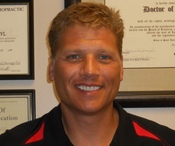Stemen Chiropractic Clinic |
April 2019 www.stemenchiro.com |
|
Chiropractic in managing seizures in children with Autism.  Over a decade ago, Pistolese presented the results of a thorough chiropractic literature review that out of the 17 papers reviewed, 15 epileptic patients out of 15 reported positive outcomes resulting from subluxation-based chiropractic care. Since his paper, several studies have been published documenting similar results. Of the various theories that have been postulated to explain the apparent effectiveness subluxation-based chiropractic has in managing seizures, Amalu's work concerning cerebral penumbra applies most readily to autistic patient suffering from seizures. The epilepsy-autism connection Epilepsy is a general term that refers to the tendency to have recurrent seizures. A seizure is a temporary disturbance in brain function in which groups of nerve cells in the brain signal abnormally and excessively. During a seizure, disturbances of nerve cell activity produce symptoms that vary depending on the location and the amount of the brain affected. Seizures can produce changes in awareness or sensation, involuntary movements, or other changes in behavior. Usually, a seizure lasts from a few seconds to a few minutes. Nearly a third of ASD children suffer from epilepsy. It has been reported that the risk of epilepsy in autistic children with severe intellectual and developmental disabilities is five percent at one year, 15 percent at five years, and 25 percent at 10 years. Significantly higher numbers occur when cerebral palsy is included as an additional comorbidity. A key fact to note is that epilepsy persists in the majority of patients into adulthood with remission in only 15 percent. The evidence behind a chiropractic adjustment in treating seizures First advanced over 20 years ago, the concept of reversing cerebral penumbra may hold the greatest explanation for the changes seen in ASD children under subluxation-based chiropractic care. Within the ischemic cerebrovascular bed, there are two major zones of injury: the core ischemic zone in which necrotic tissue is irreversible; and the borderline ischemic tissue, also known as "ischemic penumbra" (a term generally used to define ischemic, but still viable, reversible cerebral tissue). The penumbral zone is supplied with blood by collateral arteries anastomosing with branches of the occluded vascular tree and it is where pharmacologic interventions are most likely to be effective. According to Agamanolis, "Ischemia, in the penumbra, causes dysfunction due to ionic and metabolic dysfunction but is not severe enough to result in structural damage. Prompt restoration of perfusion in the penumbra by injection of thrombolytic agents may prevent structural damage in this area, thus limiting the neurological deficit." According to Amalu, hyperafferancy plays a significant role in neuronal hibernation, whereby hyperafferant activation of the central regulating center for sympathetic function can cause differing levels of cerebral ischemia. He postulates that hyperafferant activation via the superior cervical sympathetic ganglia may also cause higher-center ischemia. In light of Kent's Dysafferentation Model of vertebral subluxation, we see the significance of Amalu's theory. The Dyafferentation Model describes those situations in which biomechanical dysfunction results in alteration in normal nociception and/or mechaninoreception. This is clearly evident as the intervertebral motion segment is especially endowed by nociceptive and mechanoreceptive structures. As Kent describes, "To use the contemporary jargon of the computer industry, 'garbage in - garbage out.'" Subsequently, abnormal afferent input to the CNS will lead to a plethora of efferent pathologies. Thus, when a chiropractor adjusts your spine and returns it to proper alignment, normal signals are allowed to flow to and from your brain. This can reverse higher-center ischemia and restore the brain-body balance in autistic patients suffering from epilepsy. If your child suffers from seizures related to autism, consider visiting a subluxation-based chiropractor. According to the evidence provided in peer-reviewed literature, chiropractic care could possibly be a safe, drug-less option. |
|
|
|
